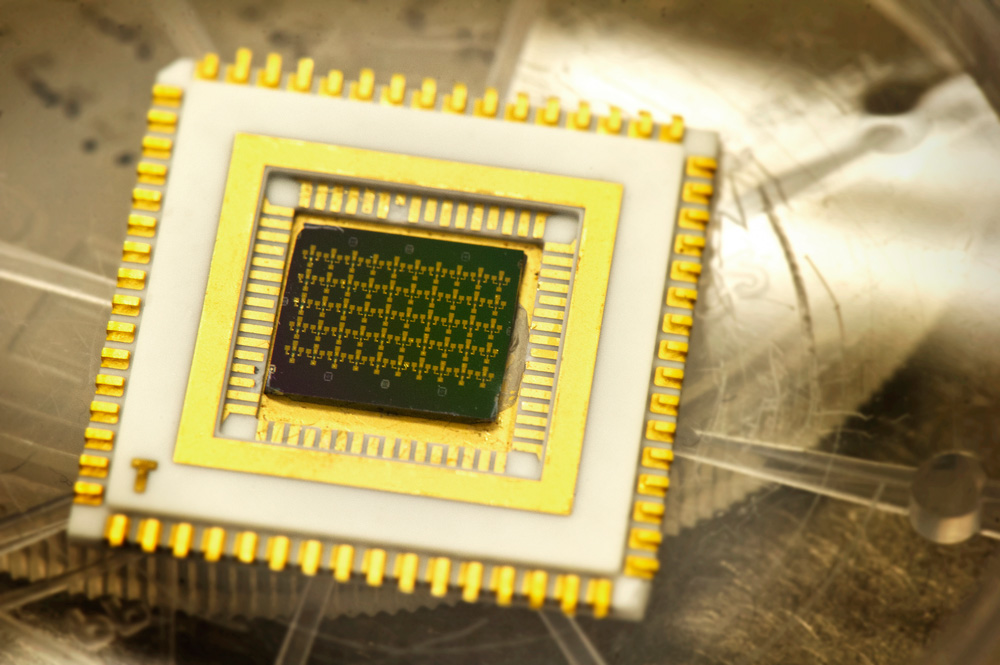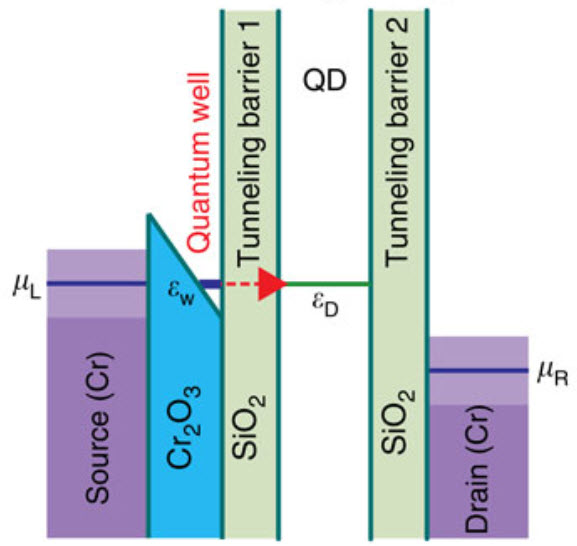Cool electrons enable transistors with low energy consumption
September 12, 2014

A chip with nanoscale structures that enable electron cooling at room temperature (credit: UT Arlington)
UT Arlington researchers have discovered a way to cool electrons to -228 °C at room temperature, which could lead to a new type of transistor that can operate at extremely low energy consumption levels.
The process involves passing electrons through a quantum well to cool them and keep them from heating. The team detailed its research in Nature Communications (open access) on Wednesday, Sept. 10.
“We are the first to effectively cool electrons at room temperature. Researchers have done electron cooling before, but only when the entire device is immersed into an extremely cold cooling bath … of liquid helium or liquid nitrogen,” said Seong Jin Koh, an associate professor in the UT Arlington Materials Science & Engineering Department, who led the research.

Schematic of electron energy filtering for cold electron transport (credit: Pradeep Bhadrachalam et al./Nature Communications)
To suppress electron excitation and cool electrons, the team used a unique nanoscale structure with a source electrode, a quantum well, a tunneling barrier, a quantum dot, another tunneling barrier, and a drain electrode
Usha Varshney, program director in the National Science Foundation’s Directorate for Engineering, which funded the research, said that when implemented in transistors, “these research findings could potentially reduce energy consumption of electronic devices by more than 10 times, compared to the present technology.”
That translates into much smaller, lighter batteries that don’t have to be charged as often.
UT Dallas scientists were also were part of the research team. The National Science Foundation and the Office of Naval Research supported the research.
Abstract of Nature Communications paper
Fermi-Dirac electron thermal excitation is an intrinsic phenomenon that limits functionality of various electron systems. Efforts to manipulate electron thermal excitation have been successful when the entire system is cooled to cryogenic temperatures, typically <1 K. Here we show that electron thermal excitation can be effectively suppressed at room temperature, and energy-suppressed electrons, whose energy distribution corresponds to an effective electron temperature of ~45 K, can be transported throughout device components without external cooling. This is accomplished using a discrete level of a quantum well, which filters out thermally excited electrons and permits only energy-suppressed electrons to participate in electron transport. The quantum well (~2 nm of Cr2O3) is formed between source (Cr) and tunnelling barrier (SiO2) in a double-barrier-tunnelling-junction structure having a quantum dot as the central island. Cold electron transport is detected from extremely narrow differential conductance peaks in electron tunnelling through CdSe quantum dots, with full widths at half maximum of only ~15 mV at room temperature.